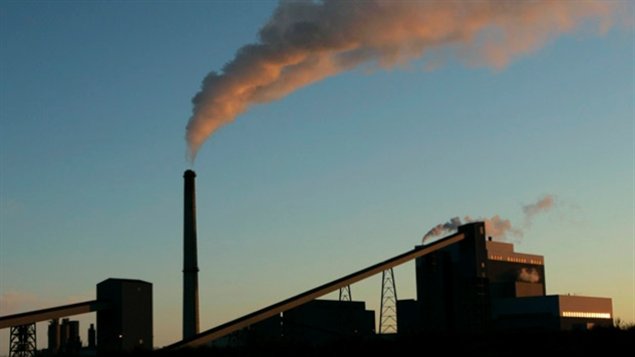The Canadian government has steadfastly refused to answer questions as to when it will follow the lead of the United States and cut greenhouse gas emissions in its own greatest emitting sector. The U.S. announced an aggressive plan to cut carbon emissions from it coal-fired electricity plants yesterday. Scientific evidence overwhelmingly shows the emissions are causing climate change.
The Canadian government immediately responded it had already reduced emissions in this sector. That’s largely because the government of the province of Ontario closed its coal-fired electricity plants last year.
Oil and gas sector is Canada’s biggest emitter
But Canada’s greatest growth in emissions is projected to be in the oil and gas industry, particularly in the oil sands projects of western Canada. The current government promised to regulate emissions in that industry in 2006 and has never followed through.
Prime minister ‘side-stepped’ regulations question
“I was struck watching the exchange during Question Period (in the House of Commons) where the official opposition asked about when we will see the long, long-promised regulations for the oil and gas industry and the prime minister sidestepped that question. He didn’t answer that and instead talked about the coal-fire power plants,” said Kathryn Harrison, a professor of political science at the University of British Columbia who studies energy policies.
Again today, the environment minister never answered opposition questions as to when emission regulations would be imposed on the oil and gas sector.
Canada ‘going in the wrong direction’
Canada has in the past linked its emission reduction targets to those of the United States. Both countries vowed to reduce emissions to 17 per cent of 2005 levels by the year 2020. With its latest announcement, the U.S. may well achieve that goal, but Canada has already said its emissions will likely be higher in 2020 than they were in 2005, “going in the wrong direction,” says Harrison.
U.S. calls on Canada to reduce emissions
The U.S. move may however pressure Canada to act to reduce emissions. U.S. President Barak Obama has already said he will not approve the Keystone XL pipeline that would bring bitumen from western Canada through the United States if it means there will be higher carbon emissions. There is also the question of whether the U.S. will buy Canadian bitumen if its extraction causes more emissions than does other crude.
The U.S. has also swiftly indicated it expects Canada to act to reduce emission in the oil and gas sector.

‘Striking’ statement from U.S. ambassador
“It was really striking that the U.S. ambassador to Canada made such strong statements yesterday night after the release of the U.S. draft standards for the coal-fired power plants calling on Canada to follow the U.S.’s lead and pointing specifically to the oil and gas sector’s emissions,” says Harrison. “So I think the U.S. is very clearly signalling that they’re looking to Canada to do more to control their emissions.”
Canada has historically tied itself to the U.S. in international negotiations on reducing carbon emissions, she notes, adding that perhaps Canada will be pulled along by this new American initiative to reduce its emissions.







For reasons beyond our control, and for an undetermined period of time, our comment section is now closed. However, our social networks remain open to your contributions.